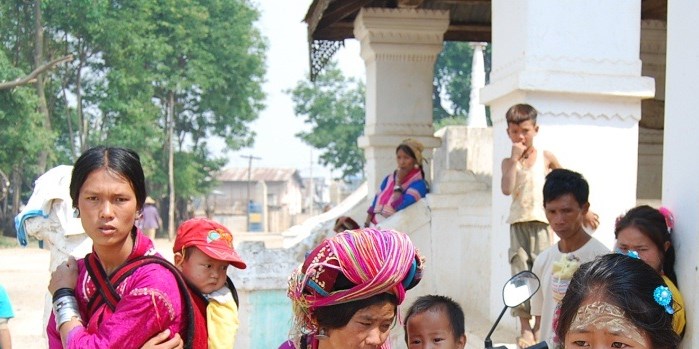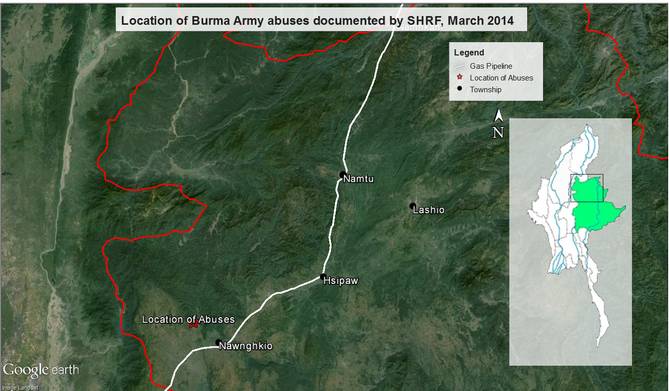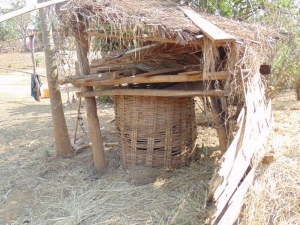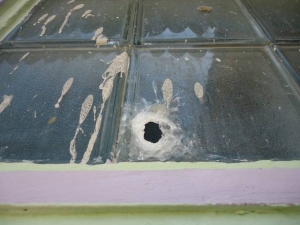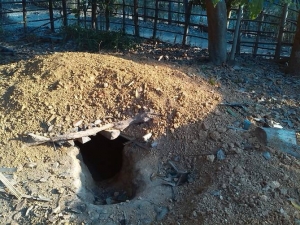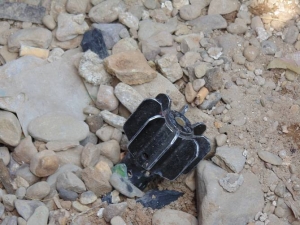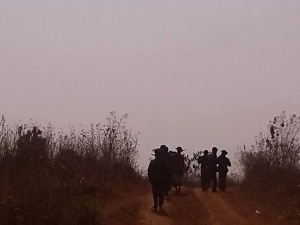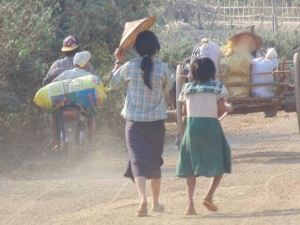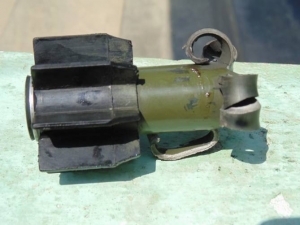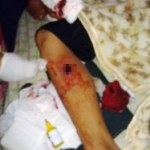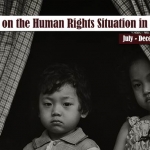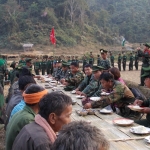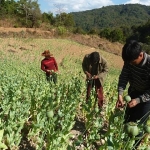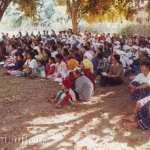Shan Human Rights Foundation, March 17, 2014
Over 1,000 Burmese government troops fired shells and sprayed gunfire into villages in Nawng Khio township, severely tortured a villager, and looted livestock, causing about 2,000 villagers from eleven villages to flee their homes on March 1-2, 2014. This took place only 10 miles from China’s oil and gas pipelines, which traverse Burma including northern Shan State.
The troops, from Battalion 502, based in Hsipaw, Battalion 77 from Bago Division, and Battalion 115 from Nawng Khio, entered the Si Ku and Pang Tee village tracts in the hills north of Nawng Khio town on February 26, setting up camp in the villages and surrounding forest.
About 50 troops camped in Wan Kai Ak village. In Si Ku village, about 40 troops camped in the village temple, staying in three temple pavilions. They said to local villagers: “We came here for a good reason. We won’t harm anyone. Don’t be afraid of us.”
However, the troops seized chickens, pigs and rice from the local villagers without asking permission or giving payment. In Wan Kai Ak, they seized about 50 chickens, killing them in front of their owners. In Wan Si Ku, they shot the chickens with guns.
On March 1st, the troops began patrolling deeper in the forest, and forced a villager from Wan Tai to accompany them as a guide. They asked him about the Shan soldiers in the area, including such questions as: “How good are their guns? How many soldiers are there?”
On the same day, the troops arrested and interrogated several villagers in Si Ku and Wan Kai Ak, including the Wan Kai Ak headman. A villager named Sai Moo, aged about 36, was suspected of being a Shan soldier because he was using a walkie-talkie. He was interrogated and beaten so badly that many of his teeth were knocked out. He was then placed in a basket overnight, and wood placed on top of the basket. The next day he was taken away by the soldiers and handed over to police in Nawng Khio. He remains in custody.
A woman from Wan Kai Ak was also questioned at gunpoint about the whereabouts of Shan soldiers. She was so scared that she passed out, and had to be sent to Nawng Khio hospital. Two other elderly women from Si Ku were also detained and questioned in the same way.
Beginning on March 1st, the Burmese troops stationed around the eleven villages in Si Ku and Pang Tee tract started firing mortar shells and guns into the villages without warning. There were no Shan troops in the villages, and there was no return gunfire, but the Burmese troops kept firing until March 2nd. A villager from Wan Si Ku heard one of the Burmese soldiers in the village speaking by walkie-talkie on March 2nd to troops firing outside the village, saying, “That’s good! Keep firing!.”
Buildings were damaged in several villages, including Wan Na Hee, Wan Na Kao, Wan Kai Ak and Wan Si Ku. In Wan Si Ku, the temple was damaged. In Wan Na Hee, the government school was damaged. People were terrified, and some sheltered in makeshift bunkers near their houses. Fortunately no one was injured. One shell landed beside the house of the Burmese government school teacher in Na Hee village, but did not explode.
Because of the shelling and shooting, about 2,000 people, most of the inhabitants of the following villages, fled from their homes during March 1st and 2nd:
- Wan Na Hee
- Wan Na Kao
- Wan Phar Tang
- Wan Tai
- Wan Lur
- Piang Luang
- Wan Si Ku
- Kai Ak (the largest village, with about 500 people)
- Khai Hsan
- Pang Tee
- Nawng Kawng
People fled to neighboring villages, including to Kio Arng, about 6-7 miles away. Some fled with bullock carts, others on trucks.
On March 5, after the Burmese troops had seized and burned down a base belonging to the Shan State Army-North in the hills about three hours away, they withdrew from the villages. They commandeered a truck belonging to a villager in Wan Kai Ak, and ordered him and another villager to drive it, carrying an officer and some wounded soldiers on it.
Villagers in Na Hee have covered the unexploded mortar shell with a car tyre and sand, as they are scared it might explode. They are hoping that someone from the government will come and remove or defuse it. No one from the government has yet come to inspect the damage caused by the shelling.
A villager from Kai Ak interviewed by SHRF on March 6 said: “We are ordinary people. We have no guns. There was no reason to shoot into our village. There were no Shan soldiers there. They had already withdrawn before the Burmese soldiers arrived, so why did they shoot?”
For further information, contact:
Sai Hor Hseng (66) 085 869 4341 (Shan+ English)
Nang Kwarn Lake (66) 084 668 0984 (Burmese + English)

